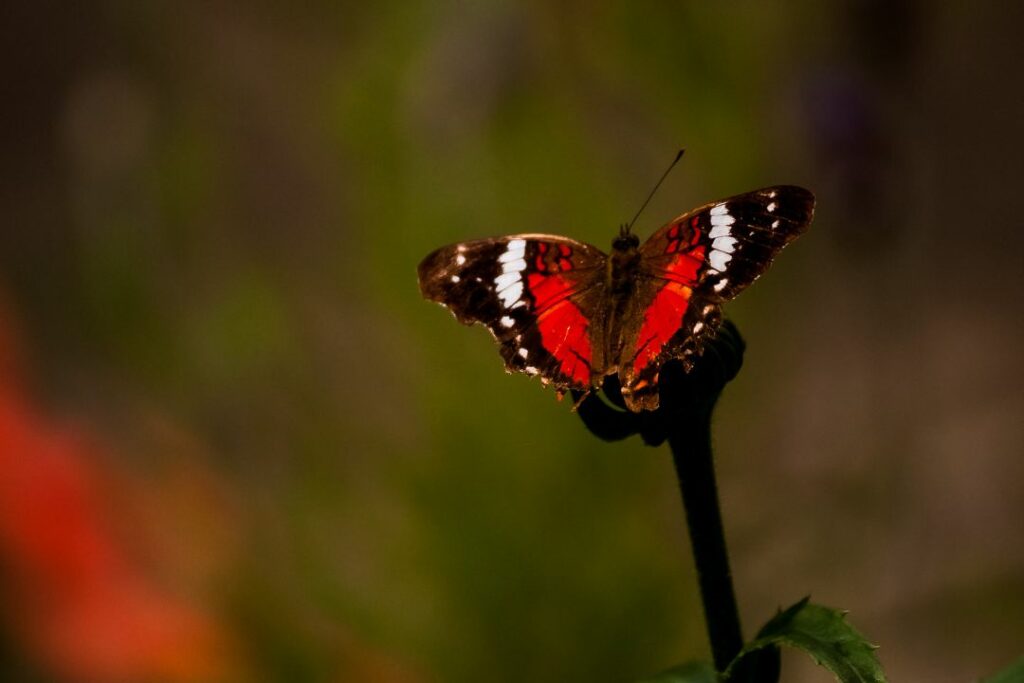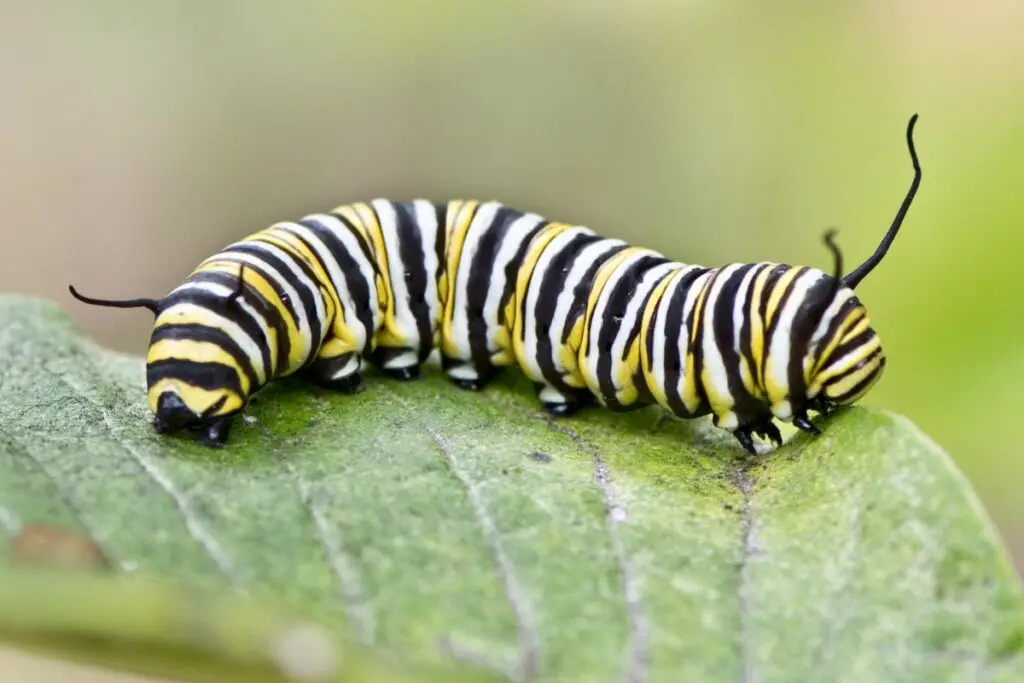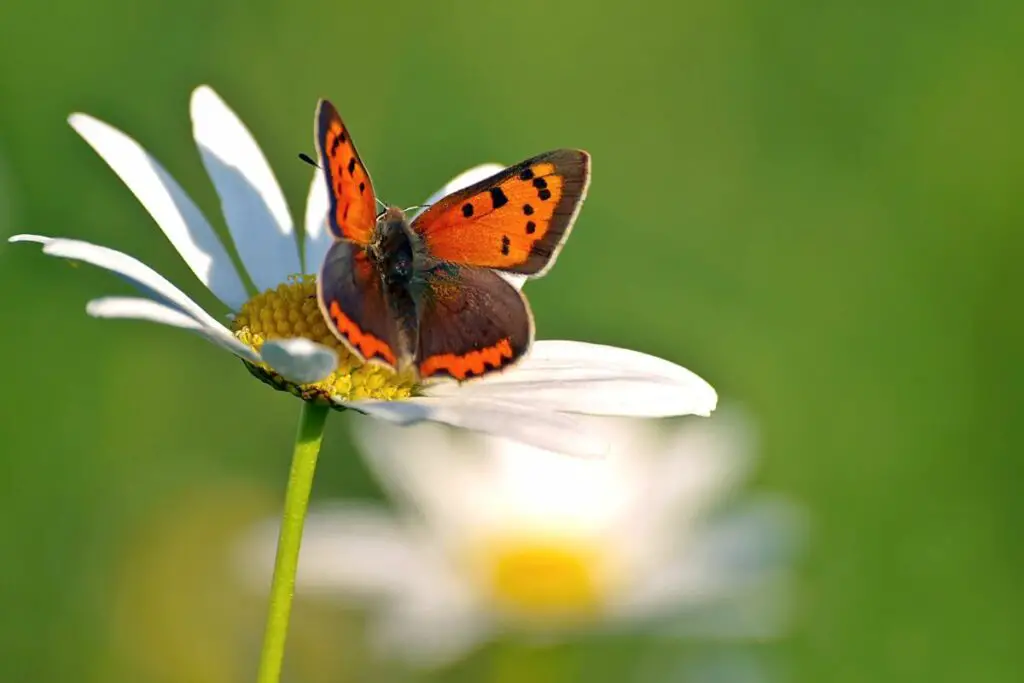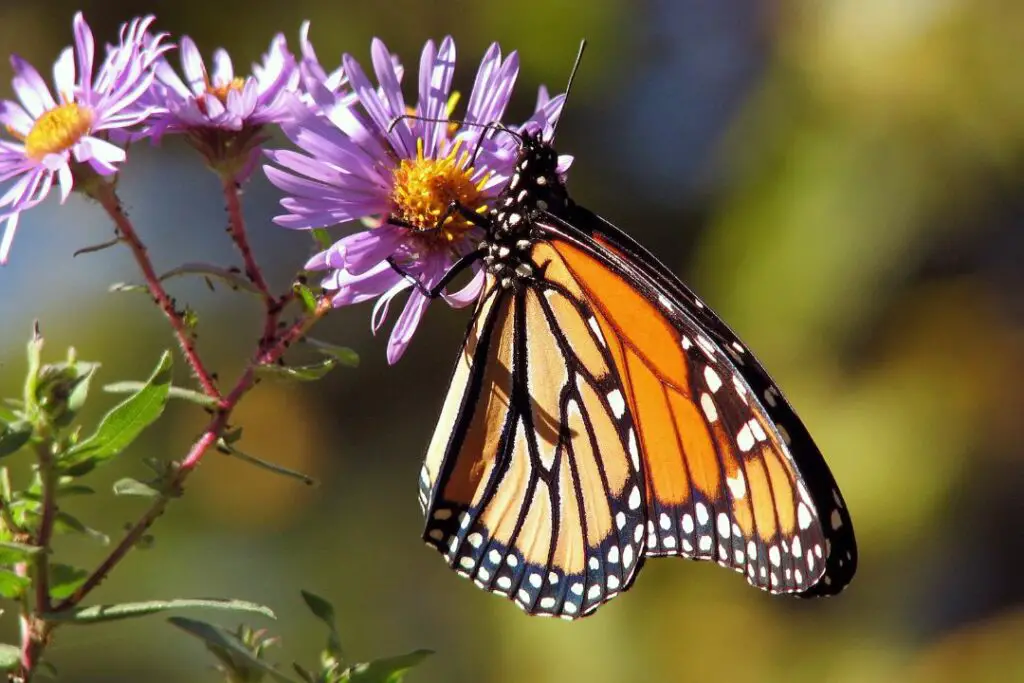Last updated on December 14th, 2023 at 04:54 pm
Ever find yourself captivated by the whimsical dance of a butterfly but wonder what else they’re up to when they’re not putting on a show in your garden?
They have a complex life cycle that’s a marvel of nature. From a humble caterpillar munching away on leaves to a chrysalis hanging in quiet metamorphosis, and finally, to the adult butterfly you see sipping nectar—each stage is a chapter in an epic saga.
And guess what? These winged wonders are globe-trotters! You’ll likely encounter these beauties in the scorching deserts, the chilly northern United States, or the temperate meadows. They’re as diverse in habitat as they are in species.
Intrigued? You should be! Stick around as we unravel the fascinating day of a butterfly.
Morning rituals – A day in the life of an adult butterfly
Good morning. It’s the start of a brand new day and a fresh chapter in the life of our fluttery friends. But what does the AM look like for adult butterflies? Let’s break it down.
Waking Up
When the first rays of the sun peek over the horizon, butterflies begin their day. Unlike humans who rely on alarm clocks or the constant chirping of birds, butterflies have a more natural wake-up call—the sun itself.
These creatures are cold-blooded, meaning their surroundings regulate their body temperature.
So, why is the sun such a big deal? Well, it’s all about warming up their thorax and abdomen. The sun acts like a natural heater, allowing them to warm their muscles and prepare for the day’s activities.
Think of it as their version of a morning coffee and stretch routine. They’d be too sluggish to fly or feed without this solar boost.
Breakfast Time
Once they’re all warmed up, it’s time for the most important meal of the day—breakfast! Adult butterflies don’t have a complicated menu; they’re all about that sweet, sweet nectar.
They sip nectar from flowers using their specialized mouthpart, a proboscis. It’s like a built-in straw that’s perfect for their dietary needs.
Do butterflies poop? Find out the answer here.
But not all flowers are created equal. Butterflies are picky eaters and prefer specific host plants that offer the best nectar quality. So, what’s on the top of their breakfast menu?
| Flower Type | Nectar Quality | Additional Notes |
|---|---|---|
| Milkweed | High | A favourite among Monarch butterflies |
| Lavender | Medium | It also attracts bees and other pollinators |
| Sunflower | Low | High in pollen but low in nectar |
So, there you have it! The morning rituals of adult butterflies blend solar-powered wake-up calls and nectar-filled breakfasts. It’s a simple yet fascinating start to what promises to be a day full of adventures and maybe a few surprises.
Ready to see what the rest of the day holds for these winged wonders?
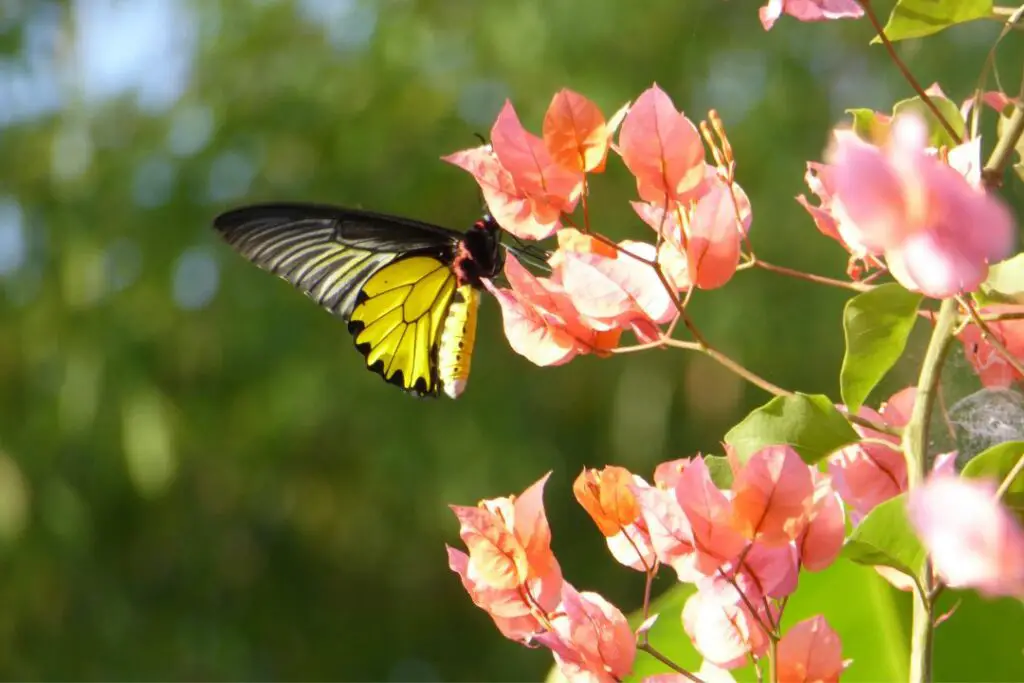
Midday Activities
The sun’s high, the flowers are in full bloom, and our butterflies are buzzing—well, not literally, but you get the idea. What’s on the agenda for these vibrant insects as the day heats up?
Socializing and communication
Contrary to popular belief, butterflies aren’t loners. They’re social just like us, and they have their own unique ways of communicating. Some species use visual signals, like wing colour and patterns, to send messages to each other.
But wait, there’s more! Some species communicate with sound and pheromones. The male cracker butterfly, for example, makes a cracking sound by snapping its wings together.
It’s like their version of a pickup line. Pheromones also play a significant role, especially when it comes to mating. A female butterfly releases these chemical signals to let the males know she’s ready to lay her eggs. Talk about complex social dynamics!
Hide, seek and camouflage.
Midday sun can be harsh for butterflies. So, what do they do? They play a game of hide and seek with predators, thanks to their masterful art of camouflage. Butterflies are experts at blending in with their environment, whether it’s mimicking the colours of leaves or even other animals.
*Extra reading – Meet the animals that make butterflies their food in our guide on what eats butterflies.
But the real MVP here is the tiny scales on their wings. These scales are not just for show; they serve a functional purpose.
Depending on how the light hits these scales, butterflies can appear in different colours, helping them to blend in even more effectively. It’s like they’re wearing an invisibility cloak made by nature!
And it’s not just about hiding. Camouflage can help them get the jump on potential mates, almost like changing your outfit instantly to impress someone.
The midday life of a butterfly is a mix of social networking and a high-stakes game of hide and seek. Whether sending pheromone-laced love notes or donning their best camouflage, these creatures are far from boring.
Onward to the afternoon adventures!
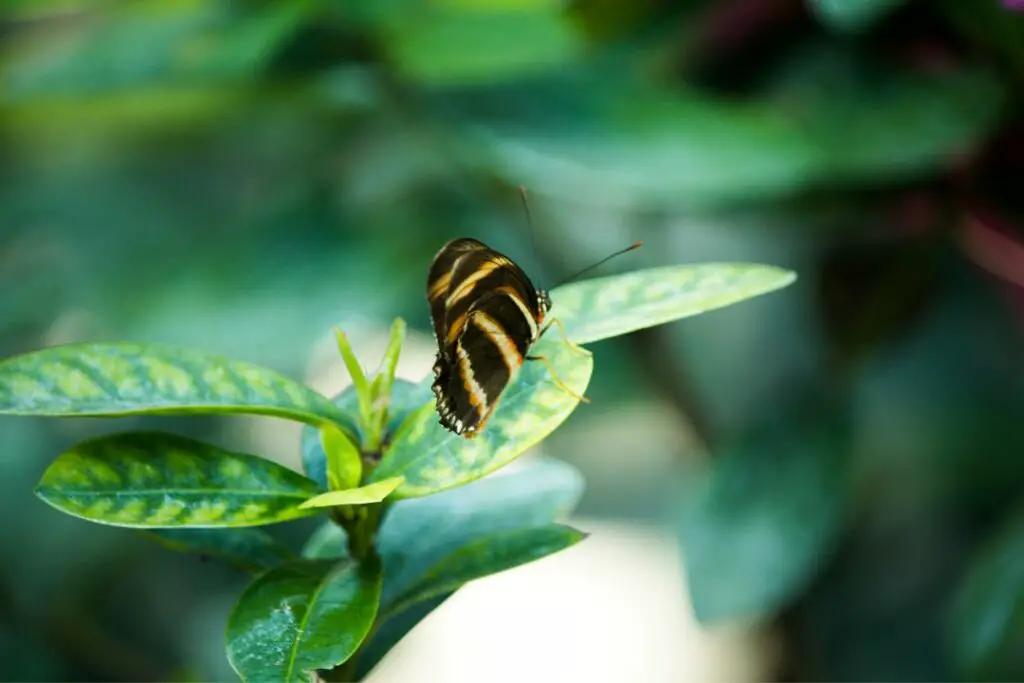
Afternoon Adventures
As the sun starts its descent, you might think butterflies would start winding down. But the afternoon is prime time for some of the most crucial activities in a butterfly’s life.
Feeding and Laying Eggs
First on the to-do list is a second round of feeding. While nectar is the go-to meal for most adult butterflies, some species diversify their diet. Depending on the species and what’s available, they might munch on leaves, sip tree sap, or even feast on rotting fruit.
But it’s not all about food. The afternoon is often the perfect time for female butterflies to lay eggs. And she’s picky about where she does it.
Each species of butterfly has specific host plants they prefer for egg-laying. Why? Because when those eggs hatch into caterpillars, the little critters will need the right kind of leaves to eat. It’s all about setting up the next generation for success.
*Metamorphosis explained – Find out how a hungry caterpillar transforms into a majestic butterfly here.
The Male Cracker Butterfly and Puddling
Now, let’s talk about a unique behaviour that’s mostly a guy thing among butterflies—puddling. No, they’re not splashing in puddles like kids in rain boots. Puddling is sipping water from puddles, wet soil, or dung and carrion.
But why? It’s all about the nutrients! Puddling allows male butterflies, like the male cracker butterfly, to gather essential nutrients like salt and amino acids.
These nutrients aren’t just for them; they’re also transferred to the female during mating, giving her the resources she needs to produce healthy eggs. Talk about being a supportive partner!
| Puddling Source | Nutrients Gained | Additional Notes |
|---|---|---|
| Wet Soil | Salt, minerals | Most common source |
| Dung | Amino acids | High in nutrients but less common |
| Carrion | Various | Rare but nutrient-rich |
So, the afternoon for a butterfly is like a mini-epic filled with feeding frenzies, strategic egg-laying, and even some “mud spa” action for the males. Curious about how butterflies wind down as the sun sets?
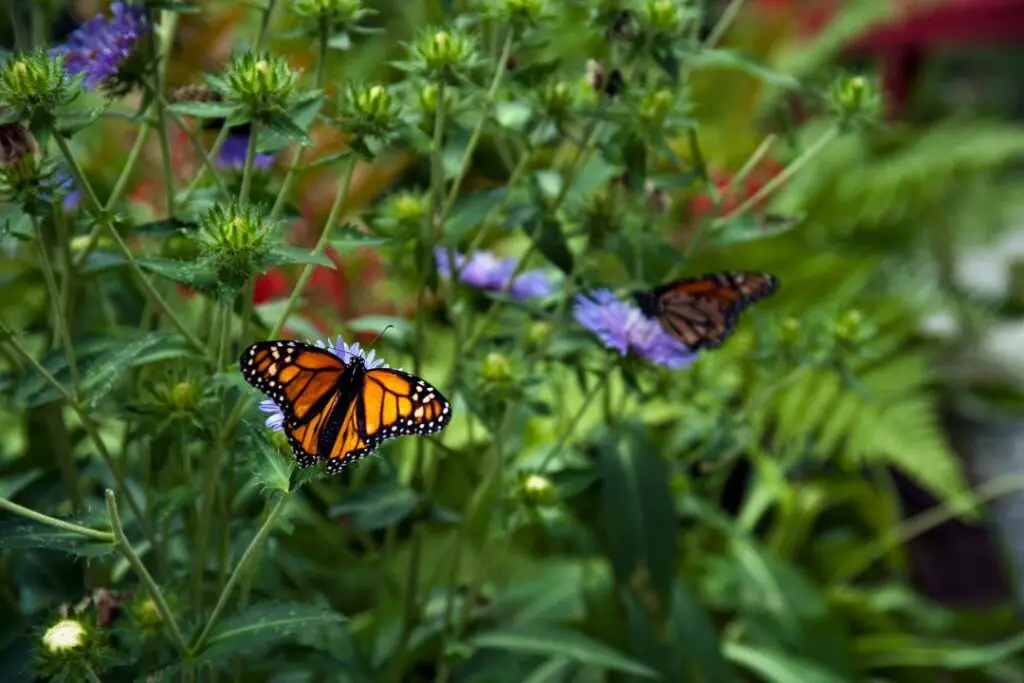
Evening Activities
As the sun dips below the horizon, butterflies start to wind down. But don’t be fooled; their evening activities are just as intriguing as their daytime escapades.
Finding a safe place to rest
As daylight fades, butterflies search for a safe place to roost for the night. This could be under leaves, in the crevices of trees, or even among tall grasses. The key is to find a spot that offers protection from predators and the elements.
Once they’ve found the perfect spot, butterflies hold their wings together vertically over their backs. This isn’t just a random pose; it serves a purpose. Holding their wings together helps them maintain a low profile and blend in with their surroundings. It’s like they’re tucking themselves in for the night!
But what about when it’s not just a regular night but the onset of winter? Some species of butterfly, like the famous Monarch, take hibernation seriously. They’ll seek out more permanent roosts where they can hunker down for the colder months. These hibernation spots are often in trees or other sheltered areas that provide some insulation against the cold.
| Hibernation Spot | Benefits | Species Commonly Using It |
|---|---|---|
| Trees | Wind protection | Monarch, Mourning Cloak |
| Crevices | Predator evasion | Painted Lady, Red Admiral |
| Underground | Temperature control | Some moth species |
Seasonal changes and climate impact
Not all butterflies hibernate. Some species are adapted to warmer climates and remain active year-round. However, climate change is starting to have an impact on these behaviours.
Warmer winters and changing landscapes affect where and when butterflies hibernate, adding another layer of complexity to their fascinating lives.
So, as the evening draws in, butterflies are far from idle. Whether settling into a nightly roost or preparing for a long winter’s nap, their activities are a testament to their adaptability and resilience.
Now, let’s move on to the nocturnal nuances of these captivating insects!
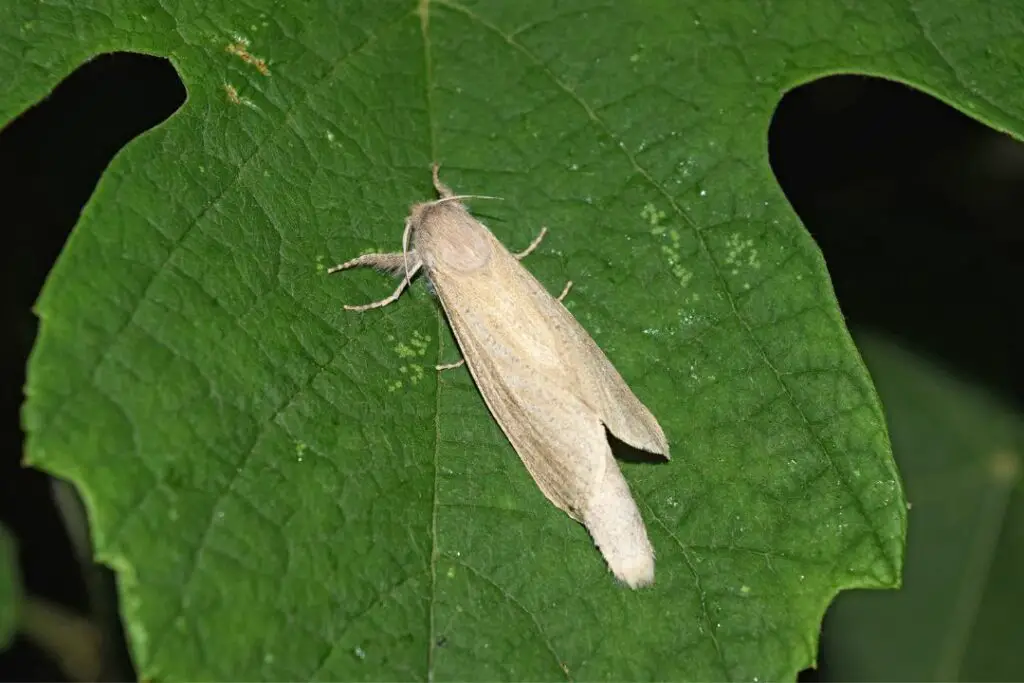
Nighttime Behavior
The moon’s up, the stars are twinkling, and most animals are settling in for the night. But not everyone’s hitting the snooze button. While many butterflies are tucked away, some are just getting started.
Exceptions to the Rule
Most butterflies are diurnal, meaning they’re active during the day. But as with any rule, there are exceptions. Take the Queen Alexandra’s Birdwing, for example.
This behemoth of a butterfly, with a wingspan that can exceed 11 inches, is known to be active at night.
But why would a butterfly be active at night? Well, fewer predators and less competition for food are two big perks. Plus, the cooler temperatures can be a relief for species that are adapted to handle it.
Moths
Now, if we’re talking about nighttime, we can’t ignore butterflies’ close relatives, moths. Unlike their colourful cousins, moths are generally more active at night.
But what sets them apart isn’t just their nocturnal lifestyle and anatomy. Moth antennae are often feathery or fuzzy, quite different from butterflies’ slender, club-like antennae.
Why the difference? These feathery antennae increase the surface area, making moths more sensitive to pheromones released by potential mates. It’s like having a high-tech radar system that operates in the dark!
Table: Key Differences Between Butterflies and Moths at Night
| Feature | Butterflies | Moths |
|---|---|---|
| Time of Activity | Mostly Diurnal | Mostly Nocturnal |
| Antennae | Slender and club-like | Feathery or fuzzy |
| Common Nighttime Species | Queen Alexandra’s Birdwing | Lunar Moth |
So, while most butterflies are catching some Z’s, a few rebels and their moth cousins are taking advantage of the night. Whether it’s the allure of fewer predators or the thrill of flying under the moonlight, these creatures prove that the world of butterflies and moths is full of surprises, no matter the hour.
In Conclusion
From the sun’s first rays to the moon’s glow, we’ve followed butterflies through their daily routines, social lives, and even their nighttime escapades.
We’ve seen how they wake up with the sun, sip nectar for breakfast, and even engage in complex social behaviours. We’ve marvelled at their art of camouflage and their strategic choices in laying eggs.
Are you intrigued by the world of pollinators? Check out our article on How to Revive An Exhausted Bee and join us in our mission to protect these essential creatures.
So the next time you see a butterfly fluttering by, remember: you’re witnessing just a brief moment in the busy, fascinating life of one of nature’s most captivating creatures. Until our next deep dive into the world of insects, keep your eyes on the skies and your gardens blooming!

